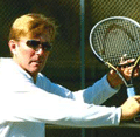The Volley:
Drills and More Drills
By Scott Murphy
A player who wants to be a force at the net has to put in quality practice time. When you're learning the mechanics, static practice is fine to a point. However, if all you do is basically stand in one spot and volley a perfectly fed ball, you're kidding yourself. Dynamic practice involves match like situations, such as; moving in, split stepping, playing a low volley deep, recovering, and then closing in on a floater and putting it away.
Here are few drills I use that may help you get started:
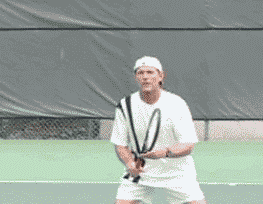
Rapid Fire
The "Rapid Fire Drill" accentuates readiness and simplicity. I'll feed four balls in rapid succession, sometimes uniformly, sometimes not. I feed the first ball with a bounce but the subsequent balls out of the air. There should be just enough time for the volleyer to ready hop, step and volley, and repeat that four times. If the ready hop is ill timed and/or the swings are too big, the sequence will break down.
As players become more adept I mix up the feeds to accentuate watching the ball off the racket. This is also a good drill for practicing wide volleys. Emphasize watching the ball off the racket and recovery.
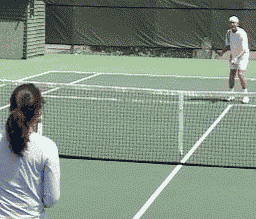
Shootout
A corollary of the "Rapid Fire Drill" is what I call the "Shootout Volley Drill."
This drill finds two players on opposite sides of the net, both at the " T." One player starts a ball to either the forehand or the backhand of the other player, both players close to ideal volley position while firing volleys at one another.
No winners are attempted. It's simply a matter of who can last the longest without making an error.
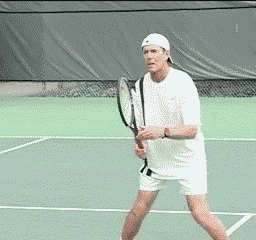
Catch and Volley
The first part of the "Catch and Volley" drill helps develop touch for drop volleys, while also providing a "self fed" second ball to volley.
As the animation shows, the first ball is caught, bumped up, and then volleyed out. Once you're comfortable "catching" the ball you can hit drop volleys over the net on the initial feed.
Practice having the ball bounce anywhere between three and five times before it leaves the opposite service box. Later on you can practice the drop volley in a more dynamic drill of your making.
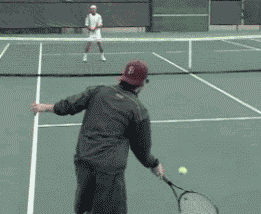
Half Court Pass
One player is at the baseline and there's a net player who starts at the service line. The boundaries are the centerline (extended to the baseline), the doubles alley sideline, and the baseline.
The baseline player begins the point with a bounce feed so the net player can better time his ready hop. The initial feed should be varied from low at the feet, to wide (on either side), high, at the body, etc. The volleyer puts the ball in play, closes to ideal volley position, and the baseliner tries to pass him.
You can play to a predetermined amount of points. It SHOULD be very difficult for the baseliner to hit a clean winner. Of course you can come up with all kinds of variations. For instance, the volleyer's shots have to land over the service line, or put the possibility of a lob in so he doesn't get unrealistically close to the net, etc. In another variation of this drill, both players start at the baseline and practice moving in with appropriate split steps on the way to ideal volley position where they have a shoot out.
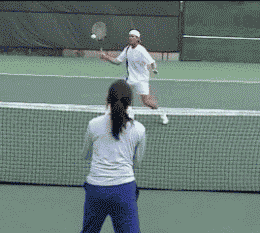
Figure X
In the "Figure X" drill two players do just that, volley back and forth in an X pattern.
The sequence is forehand to forehand, forehand to backhand, backhand to backhand, backhand to forehand, forehand to forehand, etc.
This drill is geared primarily toward ball direction change.
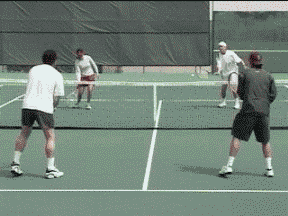
Two On Two
This is a volley drill I like that involves four people, two on each side of the net in ideal volley position, one in the deuce court, one in the ad court.
Players volley one on one; either straight ahead or crosscourt until one pair makes an error. At that point the remaining ball is in play for all four and they play the point out.
This is obviously a doubles oriented drill that helps create court awareness.
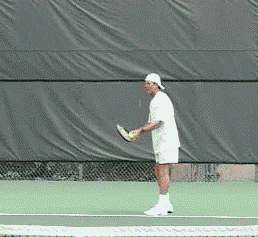
Serve and Volley
Practicing serving and volleying, even if it's not your style of play, is a great way to learn to respond to virtually every kind of volley situation. The silver lining here is that even if you don't routinely serve and volley, you might get comfortable enough to sneak it in every now and then, undoubtedly catching an opponent by surprise.
Make yourself practice it when you are up 40-love or 40-15 in your service games. You should do the same in your return games. When you are ahead 2 points or more and get a second serve, approach and go. Over time this will build your confidence in a way that's impossible in drills. It adds a strategic dimension that can yield a few extra points over the course of a close match-enough to shift the outcome favorably in your direction.
Special thanks to Lloyd Kurzweil, Mathew Barrett, and especially my fabulous wife, Cynthia Bascara, for helping with the drills!



